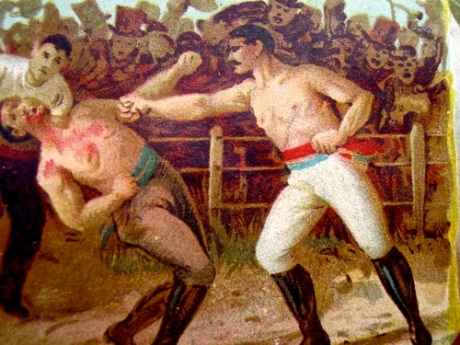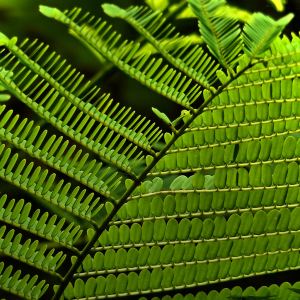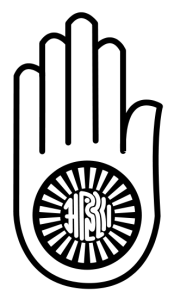Stepping Away From Yoga
September 8, 2013
Yoga is the brain eraser. You don’t come in to a session with yourself in order to leave with more. You step in to let go. The reason you are even seeking yoga is because you have too much weighing you down that is making you ill or has made you ill and you now need restoration. If you are holding on and trying to gain and attain more just like you do in other aspects of materialist life, you have not only been wasting your time and energy but you have also only been feeding your ego the whole time, and most unfortunately not been engaged in yoga at all.
It’s not too late to start with proper and immediate results. The mind, not the brain, but the mind, which is where all of your thoughts exist that scheme, plot, plan, desire, lead to dishonest behavior and selfish habits just to show you what it means to be a typical weak human being among all other weak human beings, must be shut down, disconnected, and erased during each session with yourself. What happens when you do that? The body takes over, with its incredible intelligence, and healing and restoration take place.
And now the point of it all. If you’re doing it wrong, doing it while leaving the mind on and plugged in, with no erasing but instead with more accumulation, you will continue to become addicted and attached to yoga with no progress, no further results, for years and for as long as you live. To progress is to erase with each session little by little until the corrupt data is removed, the reason for seeking yoga in the first place is removed, you live each moment of every day with no weight of a corrupt mind corrupting the body, having with each session with yourself stepped away from yoga and stepped closer to yourself until you can finally walk again undivided and whole. Step away from yoga as you step in and see how much deeper you can live with yourself, what you have been missing in life.
Dhayana or Meditation Revisited
August 23, 2010
 Previously, I have asked, “What is Meditation?”, and “Can I Meditate?”, and now we revisit those questions after we have tried to answer them. In my experience, to meditate is to have the universe talking to you and you are there to listen. The thing that amazes me is that I don’t have to go to some remote or holy place to meditate, and I don’t remember achieving a proper state of meditation in such places like I have in the din of the city, where I have been able to concentrate and block it all out in a place no more special than my apartment. It is actually pretty simple, and here is the best way I could say it, and maybe these words will resonate with you:
Previously, I have asked, “What is Meditation?”, and “Can I Meditate?”, and now we revisit those questions after we have tried to answer them. In my experience, to meditate is to have the universe talking to you and you are there to listen. The thing that amazes me is that I don’t have to go to some remote or holy place to meditate, and I don’t remember achieving a proper state of meditation in such places like I have in the din of the city, where I have been able to concentrate and block it all out in a place no more special than my apartment. It is actually pretty simple, and here is the best way I could say it, and maybe these words will resonate with you:
The universe is always talking to you. We do not hear it because we choose not to hear it. Our minds and our senses that involve our minds are constantly jumping and reacting to our environments out of habit and because we choose to do so. In meditation we do the opposite, and in choosing not to do so, the mind stops. No more knee-jerk mind movements, no more wasted energy responding to things that need no response, no thinking, no thoughts, no sounds, no words, a total disregard for the noise of things that have no importance. Suddenly, the barriers blocking the information streaming to us are removed, and in the center of your brain you “hear” the universe talking to you. You know you are experiencing this for sure because it is no longer outside stimuli saturating your mind communication and it feels like it is coming from you, outside of you. This is your higher self coming in synch with your conscious mind, one of the most important goals for meditation. Now you are part of all that is around you and there is no more you, you are everything. Once you have done this, you can be this way more easily, at more times, in more places, tapped in to who you are more often without living a life of separation from yourself.
The single most important physical act that coincides with these thought-based, or non-thought-based, concepts is breath. Through Dharana the breath is trained to lead you appropriately into Dhayana and coincide the physical act of breathing with the flow of energy in and out of you in every dimension that you occupy. We often breathe without thinking of it. It just happens involuntarily, like the beating of our hearts. You do, however, have the ability to be mindful of every breath and here is where it can be focused, meaning attributed to every inhale and exhale; eventually you will find that you can extend this breath mindfulness to every waking minute of the day with less and less effort, connecting you to being in a constant meditative state no matter what you are doing, no matter where.
Now let’s describe this from a less personal experiential perspective:
After Dharana, the mind has become steady, peaceful, and quiet, and we are ready for meditation. In Dharana, we are aware of the ego as a separate part of ourselves, used as a tool to condition that which gets conditioned. This division of ourselves into two ends with Dhayana. The identification with the idea of ‘Me’, the ego, ends. In meditation there is no activity at all. During conditioning the ego is used as an instrument of psycho-physical activity, and meditation is the ending of all voluntary activity, with no method or technique. Through the ending of all activity, further exploration takes place, and all through Dharana the techniques and methods have relevance and are necessary. This brings you to the transformed state that enables you to begin meditation.
To one who is not intimately familiar with meditation, or not ready to embrace it because training is not disciplined, meditation has the look of inaction, the look of lethargy, the look of lost opportunity. This is the perspective of the mind that is not still. However, through the gateway of Silence, the cessation of the thinking process, the discontinuity of mental movement, one is transported into a different orbit of consciousness, a different dimension; the thought-free, time-free, word-free reality. People have said it is difficult to verbalize about Samadhi, which comes after dhayana. It is no longer a separation between the cosmic and the individual, like one connected sea of shared energy.
Meditation is the last effort to be made, and it is effortless and methodless, because you have already put in all the effort into the methods and techniques of Dharana. Without effort, you don’t cling to the center of ‘Me’ or ‘not me’. No longer a man or woman, a Hindu or Catholic, you are in the lap of the cosmos, looking beyond duality. In this way it is a lot like sleep, where you make no effort to sleep unless you want to be up all night. The only difference between sleep and Samadhi is that in sleep there is no awareness except for a Yogi. Effort is one dimension and effortlessness is another. In life, we strive for effortlessness in everything we do. In yoga it is the same.
Effortlessness does not mean a void or a blankness, nor a darkness in inertia. Meditation is not a state of inertia, it is not a state of passivity, it is not a state of mere void, but when you relax unconditionally and totally, the Supreme Intelligence operates.
This is where the stream of communication from my personal explanation comes in. If you are still confused or lost about what meditation is, understand that it is a personal experience and you have to put the time in; someone other than you will not make it happen or bring you there. The more time you spend there, the more it feels like home and becomes an extension of how you operate. But it really is like switching the television to the channel you never want to watch, and it’s always there, and you have to switch it.



 Humans go through suffering, and this is fact. But what is suffering? Before that is answered, let us dwell on one very important fact just as strong as the one previously stated: suffering is not warranted. When we suffer, we walk in the light that illuminates a life, routines, movements, experiences being experienced from a perspective of weakness caused by a confusion about who and what we are.
Humans go through suffering, and this is fact. But what is suffering? Before that is answered, let us dwell on one very important fact just as strong as the one previously stated: suffering is not warranted. When we suffer, we walk in the light that illuminates a life, routines, movements, experiences being experienced from a perspective of weakness caused by a confusion about who and what we are.

 I often hear people refer to their more virtuous behavior characteristics as something they own with pride. “I’m a nice person”. “I help people”. “I do yoga”. “I’m a vegan”. Ahimsa is non-killing, non-violence, and it is a dedicated awareness of the wholeness of Life, becoming a value of your life.
I often hear people refer to their more virtuous behavior characteristics as something they own with pride. “I’m a nice person”. “I help people”. “I do yoga”. “I’m a vegan”. Ahimsa is non-killing, non-violence, and it is a dedicated awareness of the wholeness of Life, becoming a value of your life.
